Amsterdam bans creation of new hotels
Another piece in the overall strategy to reduce tourist flows to the city
 TheMayor.EU logo
TheMayor.EU logo For when you want to get into the beating heart of a city
If airports and train stations are the entrance doors to a city, then the main square is its living room. Think about it, you may have gone to a destination, say on a business trip, and you never got to check out the main square – it feels like you never really went there, doesn’t it?
So, from now on make it a habit to always drop by even if for a few minutes at these busy central locations any time you get the chance so you can breathe in – even if briefly – the atmosphere of the town. Then, if time allows you to, venture out into the surrounding streets or anywhere else you fancy for that matter, but you’ll know in your heart that you haven’t missed out. Don’t forget to take a selfie to immortalize the occasion.
And here’s a selection of what we consider to be some of the most super European squares that everyone needs to visit at least once in their lifetime and snap that iconic photo.
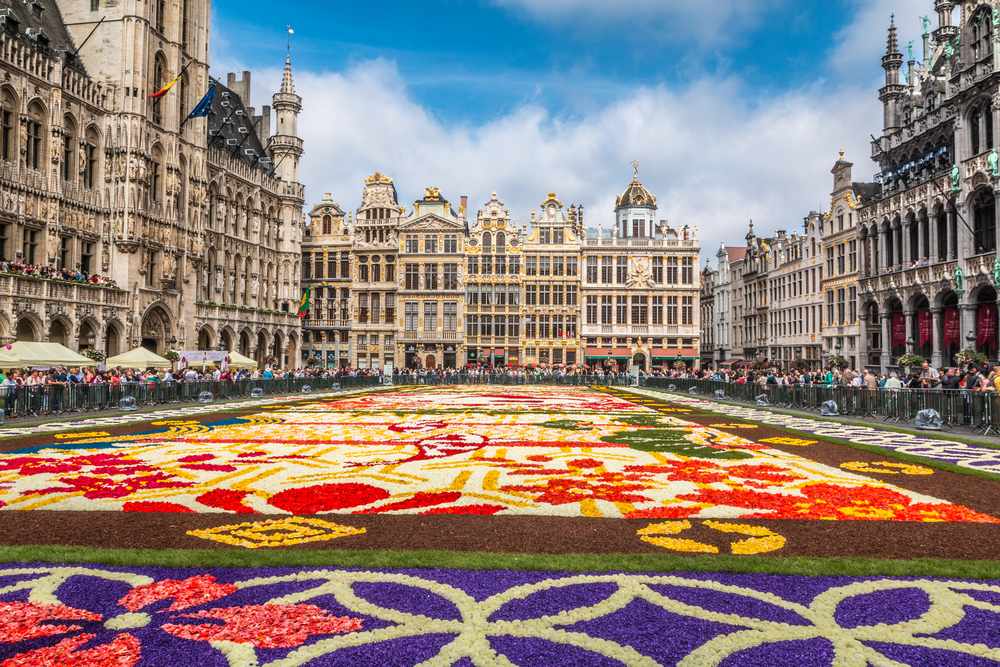
Grand Place is unique among squares since it gets its own flower carpet every two years. Source: Depositphotos
Yes, we might as well begin with the capital of the European Union. And even though its working engine, churning out rules and regulations, is located in the European Quarter (now rebranded to EUQB, as of this week), its true soul is Grand Place.
Yes, its name in French means Big Square, no points for originality there, but then again it’s the perfect spot to feel the grandness of it all. Boasting magnificent Flemish Renaissance architecture, Grand Place showcases the rich and diverse history and culture of Brussels. It is lined with opulent guild halls, the Gothic Town Hall, and the King’s House.
Curiously enough, that last building actually has two names – because, in Flemish, it’s known as ‘Broodhuis’ (or Bread House) to preserve the memory that it stands at a place where there was a bread market in the Middle Ages. And if you’re wondering who the King is – well, it’s Charles V, Holy Roman Emperor and King of Spain, who was probably the most powerful man in the world during his time. On the central tower, a statue bearing his likeness welcomes visitors and the stained-glass windows of the stairwell showcase the possessions of his empire.
Try to visit Brussels’ main square during the biennial Flower Carpet event, which falls in the middle of August, in order to admire the rich tapestry made of colourful begonias.
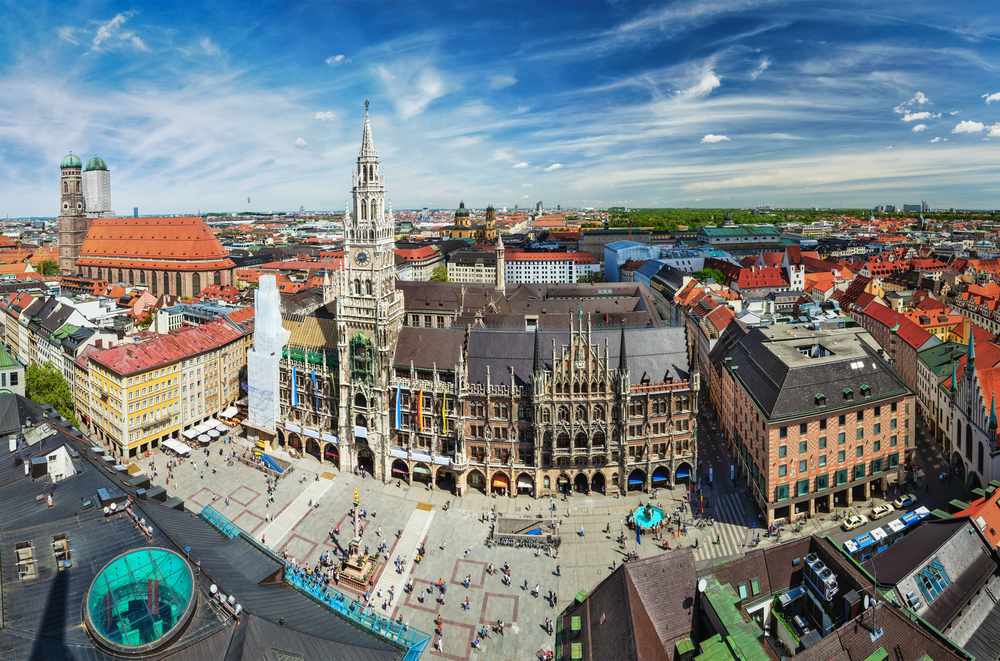
Marienplatz, in Munich, boasts two town halls in one square. Source: Depositphotos
This is the central square of the Bavarian capital and the beating heart of its historic and cultural life. What’s cool about it is that there is not one but two City Halls located there – not something that you get to see often, especially if you’re a fan of city halls like us at TheMayor.EU.
The Old City Hall is located at the eastern side of the square and it dates back to the Middle Ages, whereas the New City Hall to the north imposes upon us with its massive Neo-Gothic profile. The thing is when it was inaugurated at the start of the 20th century, even the locals were confused for a long time as to which of the two was supposed to be their proper city hall. And both of them continue to serve this purpose, with the distinction that the older building is used for symbolic events and ceremonies, whereas the new one is used for the daily admin stuff that requires running a big modern city such as Munich.
By the way, do you know where the name Munich comes from? It was exactly at that spot where the main square lies today that some monks decided to settle in the 12th century to take advantage of the busy salt road traffic passing through. Hence, the area began to be called Apud Munichen – “near the monks”. And the rest, as they say, is history which we’re sure we’ll go far far into the future.
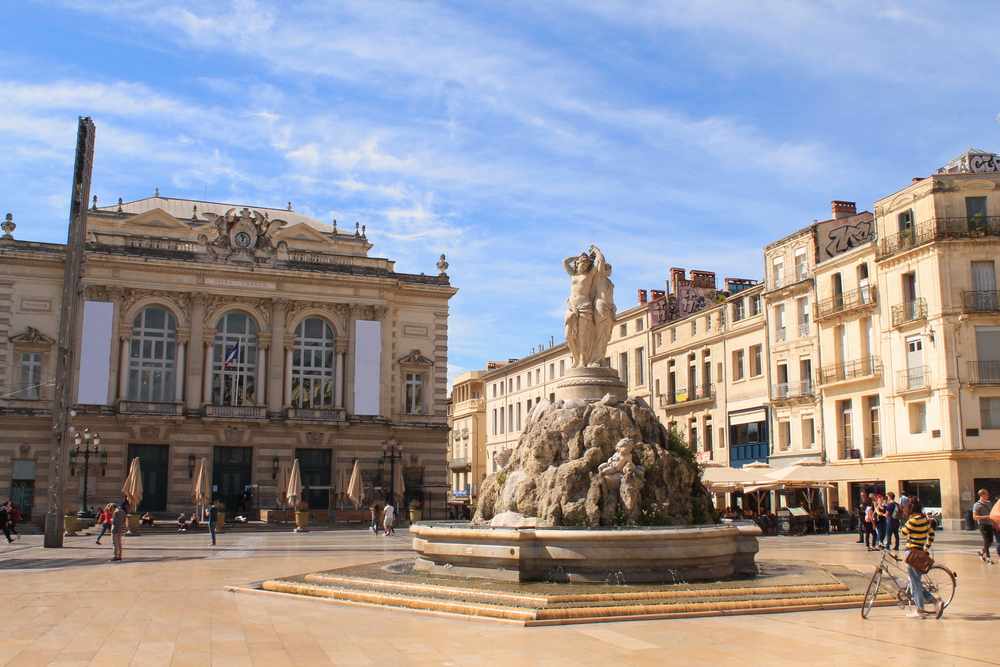
The Three Graces fountain gracefully graces Place de la Comedie. Source: Depositphotos
We’re sure that at least some tourists at certain points in time must have seen the name of Montpellier’s main square on a map and thought to themselves: “Oh, we absolutely must go there for a bit of a laugh”. I mean, it’s in the name, right? Imagine them, rather than finding an intimate standup show, being greeted by a vibrant sprawling open space. We guess the joke’s on them.
Comédie in French refers to acting and theatre plays, even if they aren’t funny. The square actually owes its name to a theatre that burned twice – in 1785 and in 1855 (if anything, that’s rather sad when you think about it). Nowadays, there’s Opera Comedie to keep up that high cultural torchlight in this charming Mediterranean city.
As for the city square itself, it’s considered among the largest pedestrian areas in Europe. Decked in Carrara marble, it really gives off a Southern vibe and its history is a testament to the constant transformations of European urban culture.
It first began as a green park, but then the horse carriages and cars arrived slowly taking over the space and eventually converting it into Montpellier’s neuralgic traffic hub. Then the mood shifted towards a better appreciation for a cleaner, quieter and beneficial urban environment and traffic was diverted, except for soft mobility. Now, in the spirit of climate resilience and adaptation, there is a plan to make the square greener by planting trees. And this should at least bring a smile to your face.
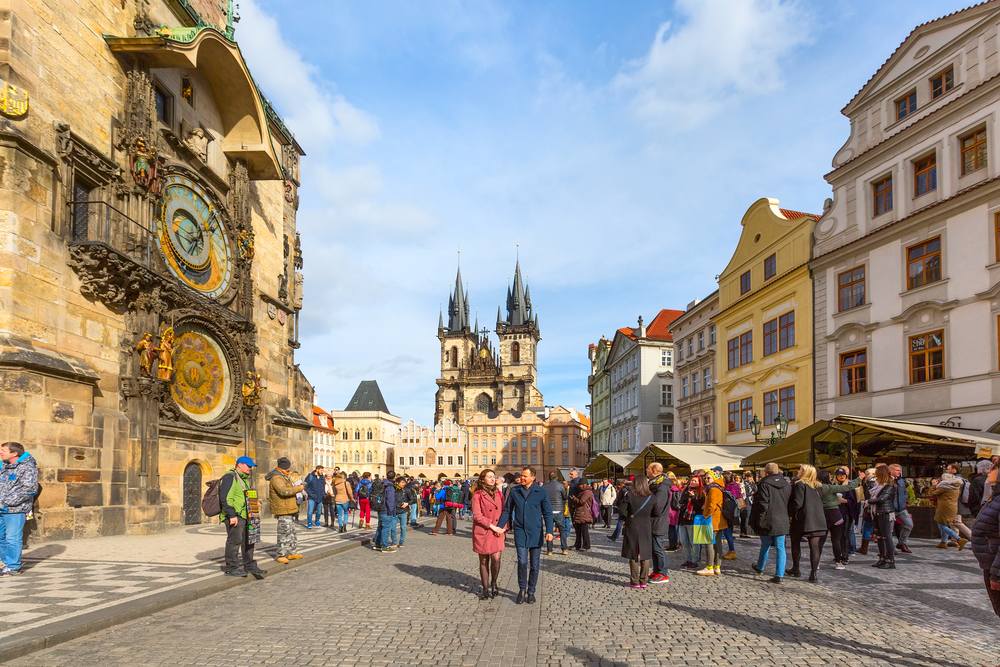
The medieval tech wonder that is Prague's astronomical clock draws in the crowds without fail. Source: Depositphotos
Its proper name in Czech is Staroměstské náměstí, but you might struggle to pronounce it. What shouldn’t be an obstacle, though, is appreciating its eternal beauty.
Found right between Wenceslas Square and Charles Bridge, you can’t miss it – not that you would want to. There’s the castle-like Old Town Hall, the Gothic Church of Our Lady before Tyn with its spires sharp like two frozen torches pointing to the sky, and of course – the delightful astronomical clock. The latter has been telling Prague residents the time of the day, the zodiac signs, the calendar, the mean revolutions of the moon, among many other things that are hard to comprehend for the common observer – and all of that for more than six centuries.
The clock is the stuff of legends, so much so that people believe that its good maintenance and operation are essential for the well-being of the Czech nation. Were the clock to stop for a long time then the Czech were looking at troubled times and this would be confirmed by the skeleton figure up near the right side of the dial nodding its head.
Oh, and one last thing, if you want to feel like a local – just refer to the square as Staromak.
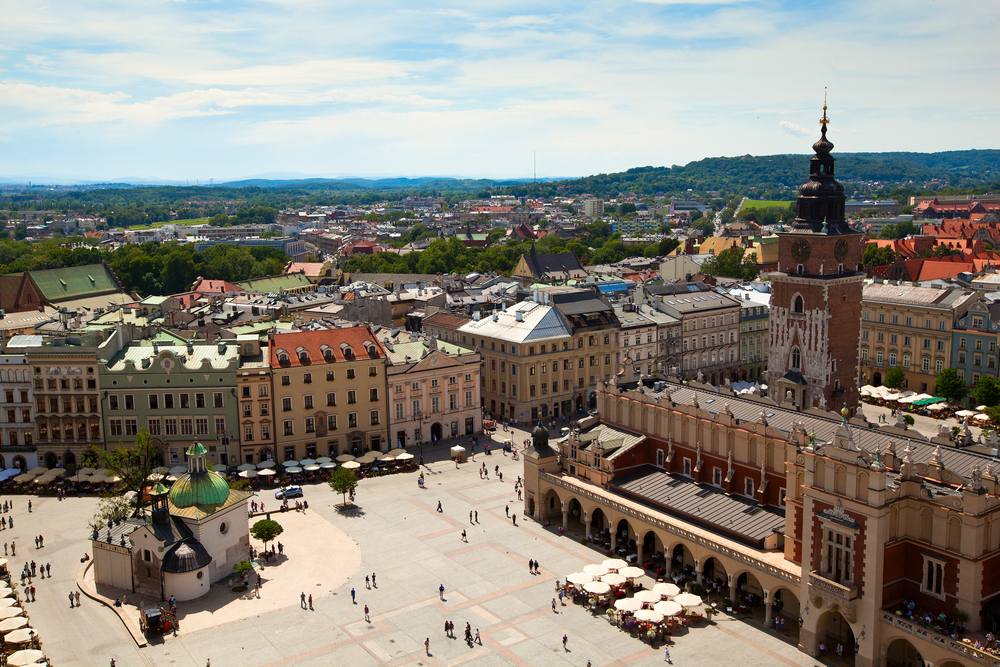
Small medieval church, large medieval mall. Things get twisted in Krakow's main square. Source: Depositphotos
You wouldn’t be surprised to find out that translated from Polish, this means Main Square. And main it is. It officially holds the title of the largest medieval town square in Europe. Whereas most urban squares are happy to have a fountain or a statue or two in their midst as something to commemorate or hold the eye – Rynek Glowny has an entire massive covered market building dating back to the 16th century in its current appearance.
That market is called Cloth Hall, or Sukiennice, and it’s the predecessor of modern shopping centres. Its name indicates that - after all, even today, the main reason we head to the mall is to buy clothes. There’s an imposing tower rising above the Cloth Hall, which is known as the Town Hall Tower, but surprisingly there’s no actual town hall to be seen anywhere on the square. It must be that thing about balance in nature – if Munich’s main square gets two town halls then Krakow’s city square gets none?
There used to be a town hall adjacent to the tower in question, and in fact, looking at older drawings and illustrations it must have been rather massive. Still at the beginning of the 19th century, the government of the then Free City of Krakow republic took the decision to demolish all the dilapidated buildings and included the town hall itself, large parts of which had been turned into a granary during the Napoleonic invasions. This might explain why the square got to be so large. After all, it’s missing its centrepiece – the town hall. Another building that was torn down in the 19th century was the Great Weigh House.
Luckily, mostly everything else survived and Rynek Glowny is every bit as busy and exciting to visit as it has always been throughout the ages. There’s some kind of an event almost every week there, thus the city square has helped cement Krakow’s reputation as the cultural capital of Poland.

Legislators and magnates have to await a preliminary ruling from the European Court of Justice

The building will then serve as the site for a new museum dedicated to Finnish-Russian relations

Another piece in the overall strategy to reduce tourist flows to the city

In addition, the federal government has launched the National Week of Action against Bicycle Theft to raise awareness of the issue and the new solution

The facility will replace the need to have water supplied by tankers from Valencia

Modern traffic lights do more than regulate the flow of vehicles at crossroads, they also collect enormous amounts of data

Experimenting with public transport provision in Germany is clearly in a state of creative fervour

Legislators and magnates have to await a preliminary ruling from the European Court of Justice

It also set the standards for a better European parking card for people with disabilities

The benefit will last until the Dutch parliament adopts the transgender law

Experimenting with public transport provision in Germany is clearly in a state of creative fervour

It also set the standards for a better European parking card for people with disabilities

Urban dwellers across the EU are having a say in making their surroundings friendlier to people and the environment.

Forests in the EU can help green the European construction industry and bolster a continent-wide push for architectural improvements.

Apply by 10 November and do your part for the transformation of European public spaces

Catch up with some recommendations for the 2024 European Capital of Culture programme from the mayor of Tartu

An interview with the ICLEI regional director for Europe аfter the close of COP28

An interview with a member of the No Hate Speech Network team













